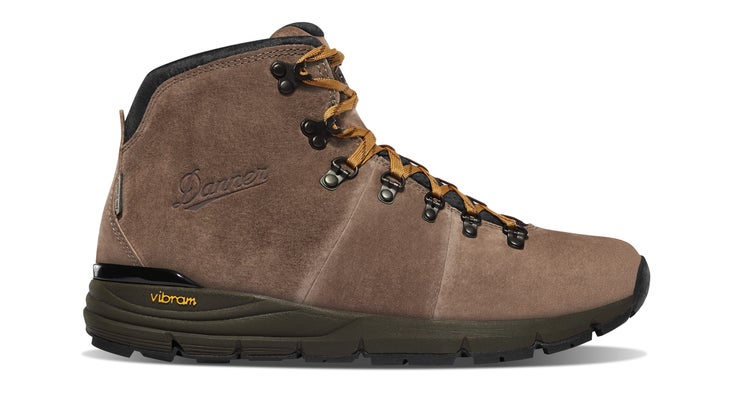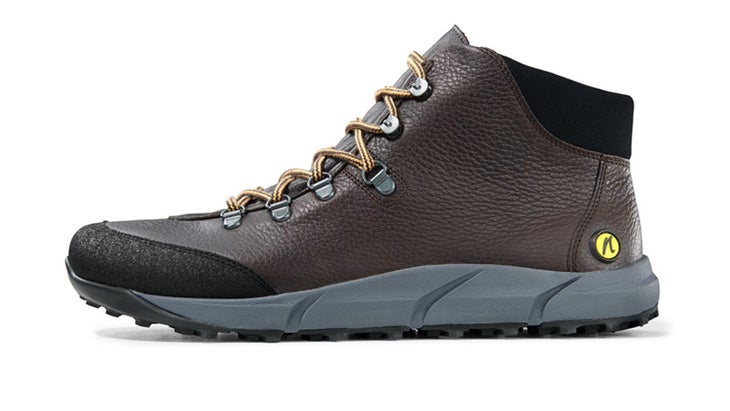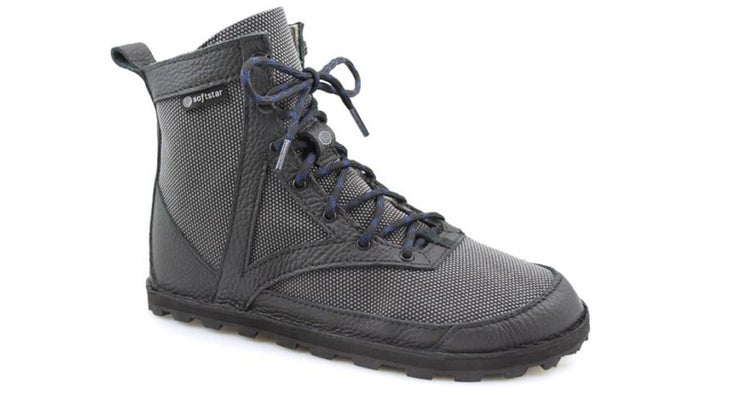Products You May Like
While hikers and backpackers as a whole may still debate between trail runners and boots, for ultralighters, there’s a surefire winner. Trail runners are lighter, more breathable, break in faster, and are less likely to cause blisters. In comparison, traditional boots seem clunky, restricting, and worst of all, heavy.
But as trail runners have evolved, boots have too—just a little more slowly. Ergonomic features that have made trail runners from brands like Altra and Hoka popular among ultralighters and thru-hikers have made their way to boots as well, from zero-drop heels to wider footbeds. Modern fabrics can boost durability while keeping weight down. Some companies are even revisiting traditional crafting methods to create lightweight boots that cobblers can repair and resole. Put together, a high-top revival might be close at hand—even for ultralight backpackers.

At Danner Boots, heavy duty work and hiking boots are a point of pride. The Portland-based company is known for its thick leather uppers and sturdy lugged soles, popular with Park Service rangers and wildland firefighters. But the brand’s recently-released hiking-specific models are decidedly different. For example, the company’s best-selling Trail 2650 GTX Mid, named in reference to the length of the Pacific Crest Trail, splits the difference between a hiking shoe and boot.
“Some thru-hikers use trail runners, but all too often wear through multiple pairs throughout their journey,” says Donald McLellan, a senior product line manager with the company. “Our goal was to give the same comfort and feel as a trail runner with the added stability, durability, and grip of a boot.” With a 14 ounce weight per boot, the midtop Trail 2650 weighs only four or five ounces more than a standard trail runner.
Another model, the Mountain 600, lifts the all-leather aesthetic of Danner’s classic 80s-era Mountain Light boot but cuts 12.5 ounces by replacing the traditional Vibram Kletterlift sole with a plush midsole and thinner Vibram Megagrip outsole.
McLellan says this transition away from heavy boots takes inspiration not only from ultralighters and thru-hikers, but also the steady rise of casual users.
“Data shows that dayhiking is growing at a much higher rate than backpacking—a long-term trend that has accelerated throughout the pandemic,” he says.

As in other parts of the ultralight gear industry, small brands trendset in footwear as well. Joe Nimble, a German brand that distributes in the United States, produces an all-leather boot with a zero-drop heel profile and wide, asymmetrical toebox reminiscent of Altra’s popular running shoes. The boot, called the Wandertoes 2.0, weighs just 13 ounces and comes with a three-year workmanship guarantee. Other barefoot-style manufacturers, like Xero and Vivobarefoot, continue to add more boots to their footwear lines as well.
One brand that has taken lightweight boots in a novel direction is Softstar. Their Switchback boot combines a minimal, zero-drop sole with traditional stitchdown construction—most modern footwear uses glue or cement rather than stitching to attach the soles—that allows the boots to be resoled. By all accounts, the boots have been a hit—the Switchback was on backorder earlier this year and Softstar hired six new employees to keep up with demand.

Softstar CEO Tricia Salcido says that balancing ultralight construction with the durability required to make resoling a viable option was a major design challenge. After all, if the upper is left in tatters, there’s little reason to resole a pair of boots. Salcido says they chose a ballistic nylon material, trademarked as SuperFabric, that’s cut- and abrasion- resistant, but still breathable and flexible.
While it might seem like ultralighters and trail runners will never part, lightweight boots do have an audience. Alan Verona, a long-distance hiker who soured on trail runners after blowing through too many pairs on an Arizona Trail thru-hike, set his sights on a pair of lightweight boots for his next purchase. His main criteria? The ability to take them to a cobbler to be repaired and resoled in the name of sustainability. With few other options that checked all those boxes, he landed on a pair of Softstar’s Switchback boots.
Another devoted ultralight hiker, Jeff Stephens, who recently completed a thru-hike of the Pacific Northwest Trail, says that he’s made the switch back to boots purely out of convenience.
“I think most ultralighters get to a point where the gear is light enough and they start adding luxuries back in,” he says. “For me, a pair of solid boots is worth it. I don’t worry about them getting ripped or torn. I don’t worry about crossing puddles and streams, I can just hike.”
